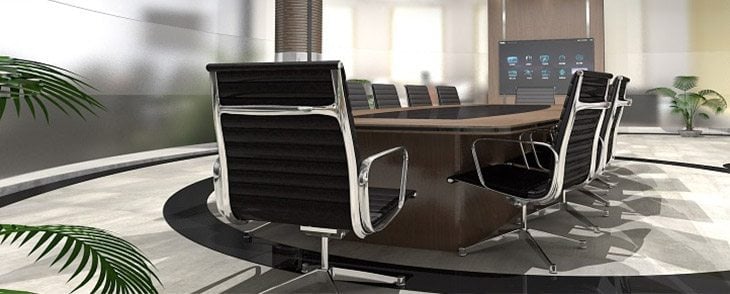Michael Spath of Kapnick Insurance discusses real estate insurance with Kapnick’s head of the real estate practice group, Russ Richards Jr. Here are highlights from that conversation.
Michael: Welcome to another edition of Startup Nation’s Ask the Expert with Kapnick Insurance Group. I am Michael Spath filling in for Jeff Sloan. Joining me today is Russ Richards, who leads our real estate practice at Kapnick. Russ, thanks very much for joining us.
Russ: Yeah, thanks for having me.
Michael: Well, Russ big picture, so someone hears the term real estate practice or real estate insurance, what are we talking about?
Russ: I think when people think of real estate, it kind of crosses sort of both sectors of business and personal. I think a lot of people think real estate, they think of their homes or whatnot. When we think of real estate and insurance space, we’re talking about buildings or land that business owners utilize to generate income for themselves.
So we’re insuring the buildings, the contents that are within that building, the structures that are on there that may not be the building. So you think of signs and walls that some locations have, all of that is included in what we insure.
Michael: So when you’re talking about real estate and you’re insuring the building, the term that we use is replacement cost. So, what is replacement cost? How do you calculate? What are some of the things that you need to know from a business owner or the person who owns the building in order to get those numbers?
Russ: Yeah. So replacement costs. When we talk about replacement costs, that is really a loss settlement. That is how the insurance companies determine how are they going to pay out on that claim. So there’s a couple different ways that they do that.
There’s actual cash value. That’s really the value of the building minus depreciation. Replacement cost is that is they’ll replace your building with similar quality materials. So, if you have a frame building with drywall, they will replace it with frame and drywall. So it’s really important to have replacement cost on your insurance policy.
You don’t really wanna go with the after cash value, because the whole purpose of insurance is really to put you back whole, the second after that loss happens and replacement cost does that.
As to your question on sort of how that replacement cost number is generated, we put the building characteristics. So, you think of the year that it was built, the type of construction that it is. Is it frame? Is it masonry noncombustible? and square footage, certain things like that go into a formula that really generates the total replacement cost value.
It’s not an exact science. It changes with cost materials and trades go up, they fluctuate. So it’s really important that business owners pay attention to that number and work with us on making sure that we have adequate coverage.
Michael: Russ, whenever I’m working with a prospect I always ask them how old is it? As the older things are, what are the bigger exposures that are there?
Russ: Yeah, the older the building, the roof, the electrical, the plumbing, really the higher likelihood that you’re gonna have a potential loss, and that’s backed up by data and statistics..
I just think of a car analogy. You have a 1984 car driving down the road, and then you have a 2022 vehicle next to it. Which one’s likely to have something go wrong in the engine and break down? It’s gonna be the older one. It’s the same way in building.
You have an older roof and it’s been out in the conditions and weather and it’s been deteriorated. There’s a higher probability that there’s going to be a leak in your roof causing a loss. The same thing with old electrical—there’s a higher likelihood that you could potentially have a fire from your older electrical being overloaded. Plumbing, same thing, older plumbing that hasn’t been updated. You have higher likelihood of cracked pipes and having water loss.
Carriers look at those things and it really comes down to the probability of having a loss and what that looks like of what they would have to pay out on a loss.
Michael: In terms of leasing a space, how is it different if I’m just a tenant when it comes to insuring the building versus if I’m actually the person that owns the building?
Russ: Yeah. So that really comes down to the contract between the landlord and the tenant. What does that contract look like and who does it place the risk of the building, the coverage on? And so more times than not the landlord who owns the building, they will have the coverage in place for their asset—the building.
And then as the tenant, you basically cover all of your contents, all the things that are within that building.
Michael: But sometimes there’s a build-out within the space, right?
Russ: Yeah, exactly. There’s coverage called tenant’s improvements and betterments, and that really covers the build-out.
So again, even as a landlord, you wanna make sure that in your policy, you do have coverage for the tenants improvements and betterments, if that tenant leaves. You still wanna have coverage that covers the design that they’ve done with the space.
As a tenant, those build-outs can be very costly, make sure your policy covers those as well.
Michael: Talk to us a little bit about the liability side of it, how important it is. And is there a certain limit? Is there a standard, how do you go up in those levels?
Russ: Biggest exposure when it comes to real estate is slip and falls that are centered around typically the ice and the snow.
You do also have some exposures outside of that, whether you know, it’s cracked sidewalks, you have maybe some potholes in the parking lots or those type of things. Those are also hazards that on the liability, you have to really pay attention to and try to mitigate those as much as possible.
When it comes to liability, coverage and limits, the standard primary general liability is $1 million per occurrence, $2-million aggregate. Aggregate just really means a bucket of money. So you have $2 million that you start off with every year, and each occurrence has a maximum of a million dollars paid out. That’s really the standard primary liability, but we always advise our clients that the million-dollar policies generally are not going to be enough. We are in more of a litigious society. So we really encourage at a bare minimum to buy a $5-million umbrella liability that would go over that primary $1 million. Then go from there, we can build up to $10 million, $15 million, $20 million. You can go all the way up to however much you’d like to purchase.
Michael: Russ, final thing for you here. We were talking before the podcast, right now in the state of Michigan, it’s expensive to build. I don’t think Michigan’s unique in that way. Labor is harder to come by, materials are harder to come by. You might have three years ago, put a replacement cost. I got $5 million to replace my building. If you haven’t updated that in three years. You have some type of loss you might find it costs $8 million to rebuild right now.
So how important is it to constantly be aware of that and how important is it to work with an agency like Kapnick?
Russ: It’s crucial. At Kapnick, we specialize in certain verticals, real estate being one of them. What that means is we have a team of 15 people who all they do day in to day out is work on real estate risk.
So we understand the exposures that our real estate clients have. We understand the insurance companies and what they want, what they need. We can negotiate better pricing for our clients and understand the trends that we’re seeing and how they affect our real estate clients.
If you don’t have a team like that behind you, that’s a problem. We’d be more than happy to work with you and take a look at your program.
Michael: Thank you, Russ. Appreciate it.
Russ: Yeah. Thanks Mike.
Michael: You can learn much more about our Real Estate Practice Group by going to kapnick.com.







